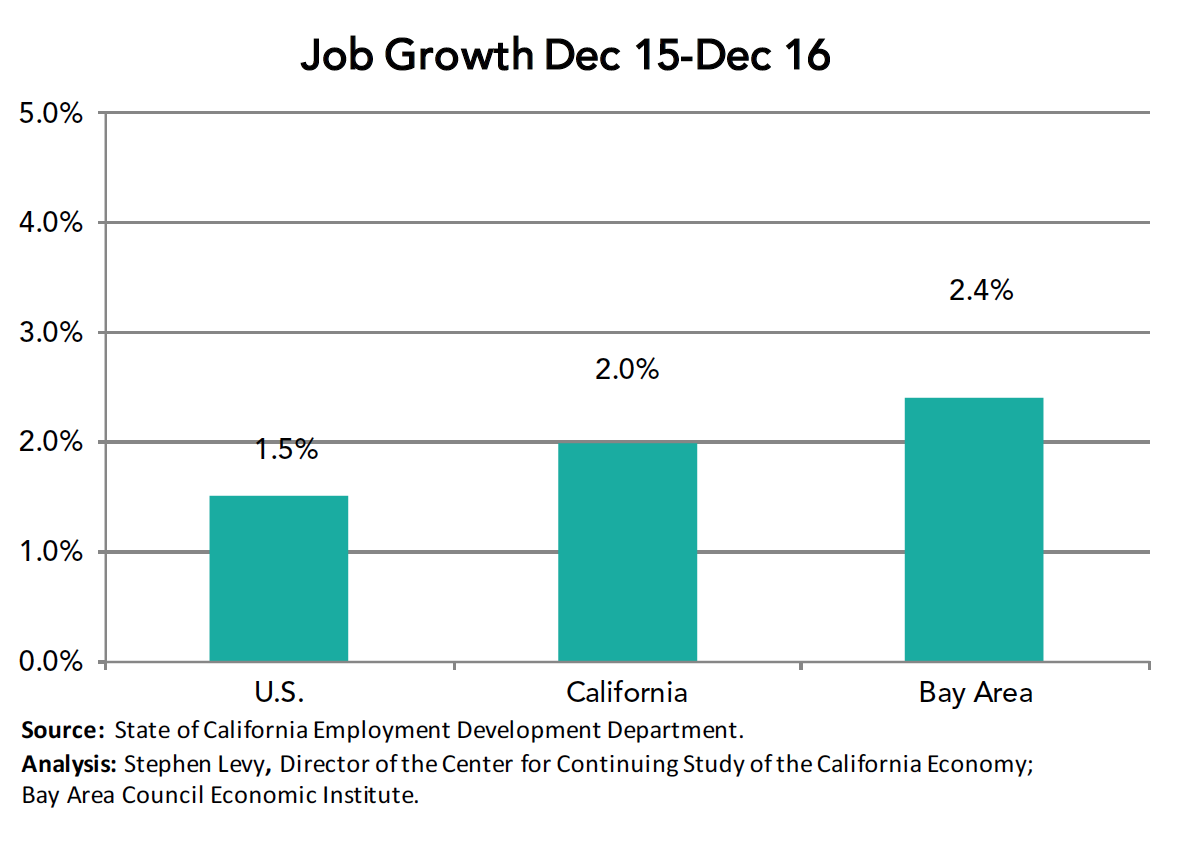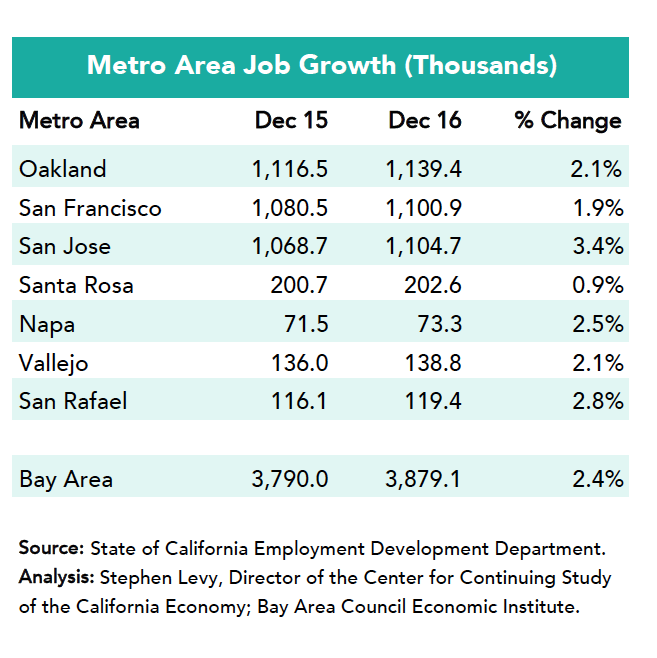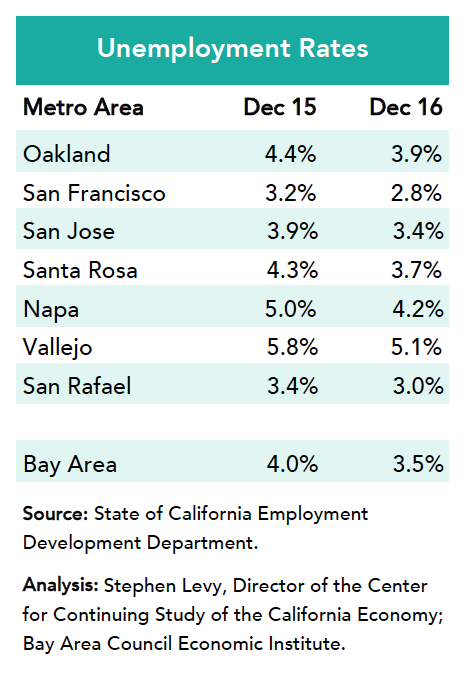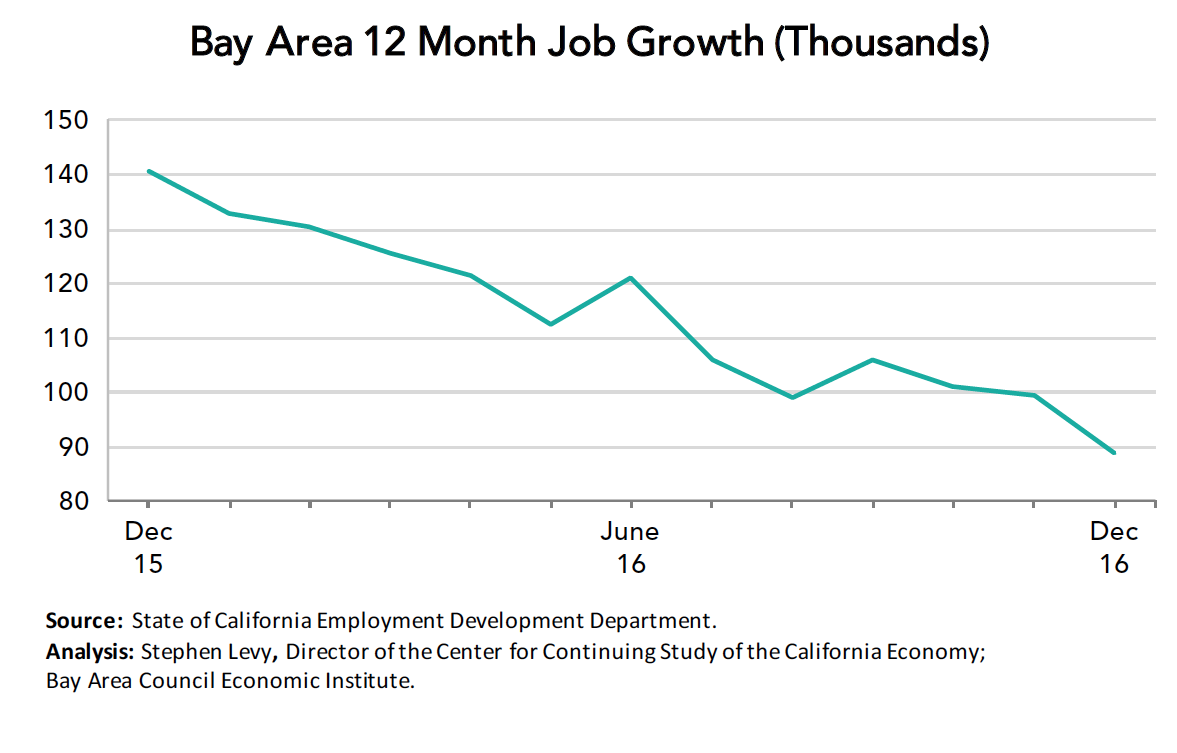
The California Employment Development Department (EDD) has released job and labor force estimates for December 2016. Here are the highlights.
Job growth slowed in December while year over year gains continue to outpace the state and nation.
Labor force growth remains strong which implies that job opportunities are strong enough to bring some workers back into the workforce.
At the same time as the labor force is surging, unemployment rates are at the lowest level since the dot.com boom.
Year over Year Job Growth Strong but Slowing
The region added 100,300 jobs between December 2015 and 2016 for a gain of 2.4% compared to 1.5% for the nation and 2.0% for California. The pace of job growth is likely to slow in 2017 and beyond as more baby boomers retire and the pool of unemployed workers shrinks but companies throughout the region continue to make plans for expansion as shown by the recent approval of the Facebook expansion in Menlo Park.
Year over year job growth remains above the national average in all but one metro area in the region.

The job gains continue to push unemployment rates lower even as the labor force continues to add workers although the region is now at or close to full employment.

While year over year job gains have declined from mid 2015 peaks, they remain in very healthy territory with no signs of a significant loss of competitive advantage. Job growth rates in 2016 are likely to be the peak going forward as baby boomer retirements are slowing labor force growth.

The continuing job growth now that unemployment rates have fallen will bring new residents to the region as will the growing need to replace retiring workers.
All of these trends underscore the importance of policies to increase housing and make sure that housing and transportation challenges do not undermine the region’s still vibrant economic competitiveness. Bay Area residents approved many funding measures for transportation and several local measures give hope that the housing supply and affordability challenges are being increasingly recognized by residents. The Bay Area Council has identified policies that can reduce costs and other barriers to expanding housing choices. Here is their analysis
Today President Trump was inaugurated.
His agenda has implications for the state and regional economy that will be explored by the Bay Area Council Economic Institute in future months. Here is a first analysis.
The region’s economy is tied to the world economy through trade, immigration and investment. All of these issues were discussed the incoming President and what happens in the coming legislative session will have major implications for the state and regional economies.